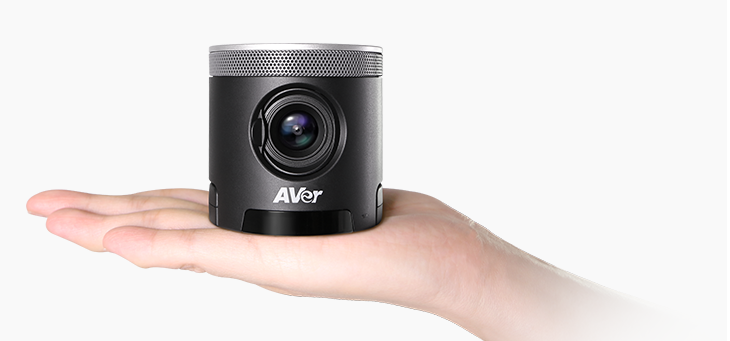Using USB video conferencing equipment to connect teams is becoming a more commonplace activity in businesses all across the world. In fact, the increase in the work-from-home movement has grown exponentially and according to Global Workplace Analytics at least half of the US workforce holds jobs that are compatible with some form of telecommuting. Most employees (80% to 90%) also express sentiment that they would like to be able to incorporate teleworking into their job and some 36% say they would choose the ability to work-from-home over a pay raise.
USB video conferencing provides organizations with the unique ability to cost affectively meet these new needs and wants of employees. Today, we will look over some of the benefits that USB conferencing systems provide to a new growing work trend and cover the disadvantages of traditional MCU room-based conferencing systems.
If you want to know more about the benefits of room-based MCU conferencing systems:
Highly Versatile with Premium Quality Video
Here’s an interesting fact for you. Did you know that more than half of message interpretation is from facial expressions and a speaker’s body language? To break it down further, about 55% is interpreted through expressions, while tone of voice imparts 37% and the actual words a measly 8% to a message. This means that in order to have effective communication over distances video is king.
As we stated up above telecommuting is all the rage with workers in the workforce. USB video conferencing systems bring technology that provides for this method of collaboration to successfully occur. Unlike web cameras, professional USB conferencing cameras provide highly defined video up to and including in 4K. This helps to bring out more communication between participants as body language can be clearly seen and will not be obscured or fragmented, as can be the case with some lower quality webcams. To provide your teams with the most accurate collaboration experience, USB cameras play an essential role in providing the high quality video needed.
Beyond their specifications, however, USB conferencing systems tend to be highly portable and are easy to set up almost anywhere that has an internet connection. With this versatility it is possible to empower a mobile workforce that can create a more productive and connected work environment. On that note, did you know that 94% of organizations that incorporate video conferencing into their business models say they saw an increase in employee productivity and one study performed by the New York Times found that allowing workers to join from home saw a 13% increase in their productivity. It really is amazing to see numbers increase by that much through a simple change in company policy.
Perfect for Third Party Software Use
The past two decades have seen a rise in the availability of third party web-based video conferencing software. Software like Zoom, BlueJeans, and Skype have all made video conferencing accessible to anyone pretty much anywhere. USB conferencing systems are highly compatible to take advantage of these platforms and fit with the specific configurations of each one.
I recently had an experience with telecommuting to the office (you can read more about that here) where I used an a AVer USB CAM340 conference camera in order to stay connected with the team. The CAM340 is a Zoom Rooms certified conferencing camera and using Zoom to connect in for meetings was a lifesaver. Third party software made scheduling and connecting with my team simple, effective, and convenient. (Interested on learning more about telecommuting click here)

USB cameras let organizations create an environment where everyone can work according to their own scheduling and attend meetings from anywhere. This ability to use and seamlessly connect with third party conferencing software connects team members and keeps remote employees up-to-date on the goings on of daily life at work, leading to a better work/life balance.
Saving You Money and Your IT Teams Time

On the whole USB conference cameras are an affordable collaboration tool for organizations looking to increase their teams ability to coordinate over distances. Unlike room-based codec systems, which can range in the thousands of dollars, USB cameras are a great deal less expensive at their initial purchasing cost and with a wide variety to choose from organizations can usually find a suitable model to meet their needs.
Beyond just the initial price tag, one must take into account the costs associated with the upkeep of your communications devices. Room-based systems can normally require software or other communication framework to be integrated into your communication networks. This means that your IT teams will need to spend time and effort in setting this up and keeping it maintained. Room-based systems can also be complex devices and if you are a layman to the video conferencing world you could run into problems, which would require another call to your IT team.
USB cameras are pretty simple to install and use and with the help of the above mentioned third party conferencing software can really help to remove your IT team from the equation of your video conferencing setups.

Being highly flexible devices, most USB cameras are constructed to be highly portable. This means that 1 video camera can be moved easily around the office or to different rooms, saving on the cost of purchasing additional tools for each room.
With a low price tag, less IT demands, and the flexibility to be in any room, USB Conference Cameras are a great way to get your communication network started and to build efficient communication in your organization.